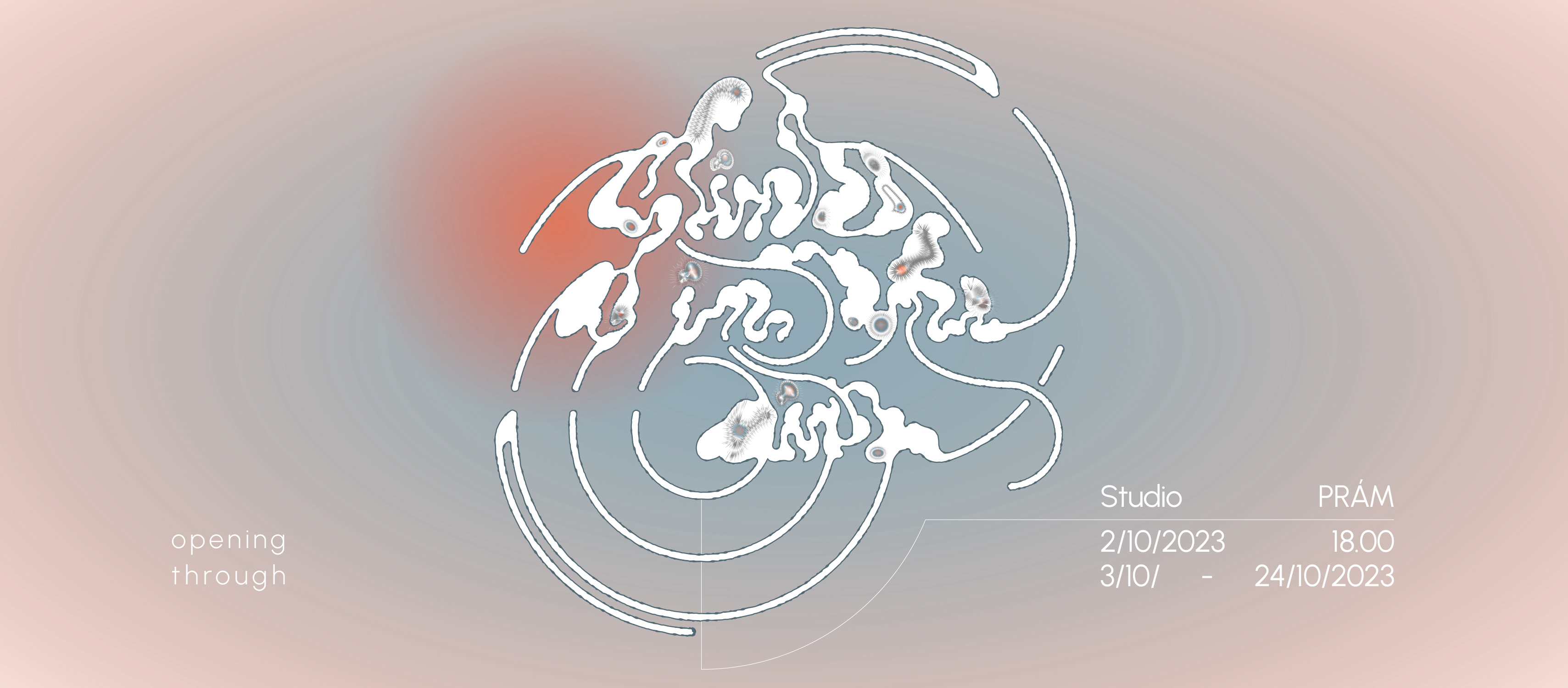-
24. 10. 2023Výstava
Marika Krčmářová, Nikolaj Jessen: Glints In the Dirt

We are inviting you to the exhibition Glints In the Dirt by Marika Krčmářová and Nikolaj Jessen, curated by Mariana Pecháčková.
exhibition opening: 10/02 at 6 p.m.
exhibition: 10/02 – 10/24/2023
Yet only a few feet underneath
are two veins, pure red and bright gold carnelian.
Two hands sink into the damp mud – quick! You must dig while you still have at least an inkling of where you might find it. The orange-yellow colour of carnelian, you see, darkens significantly after being exposed to heat, due to exposure to iron oxide. While it is engulfed by the darkness of the soil, it shines a transparent yellow, untouched by humans. But as soon as you touch it, the semi-precious stone changes colour. It turns a crimson red, as a bleeding reminder of the fact that the stone pulses with its own life.
The term natural magic began appearing in the 13th century, when, as an antithesis to demonic magic, it explored properties that, while contained exclusively in the natural realm, contained influences emanating from distant regions of the cosmos. At around the same time, the Persian mystic Rumi, in a poem of his,[1] made use of carnelian as a metaphor for the interconnection of the inner and outer; the human and the natural. It is thus no coincidence that this stone is often ascribed the ability to change between “male” and “female” energies (although this notion is based, in its essence, on the principle of dualism), derived, again, from its ability to radically transform in colour. Our dualist understanding of the world constantly forces us to think exclusively within the framework of two opposites, and the illusion of choice between them gives us, for a moment at least, a feeling of control. Instead, however, we find ourselves pressed between two walls – and we can only escape by going forward or back. The current escape strategies of post-humanist discourse thus emphasise the phenomenological approach of being-in-the-world; of the inevitable interconnection between our internal experience and the external world – and thus the dissolution of the dual perspective. Everything is connected and escape is only possible through the world, outside the narrowing space between the two walls.
One of the strategies that Glints In the Dirt uses is the pagan perception of the natural world. In Nikolaj Jessen’s video, the wind ceases to be merely a force of nature – it transforms into the breath, an essential everyday experience for all human and non-human agents. Marika Krčmářová’s hand-sown object levitates above the ground and can, at first sight, remind one of an animal skin of the kind often used in pagan rituals. Upon closer inspection – and after encountering the strikingly sour smell of oranges – it soon becomes apparent that this material is not of animal origin. Similarly, the nondescript and stiff sculptures reveal that their hollow material lives its own life – they allow air to pass through them and thus reinforce their foundations. However, the seemingly existing order is based on its own instability. When they come into contact with water, the sculptures change into a disintegrating sticky matter. The connection between internal (immanent) and external (transcendent) perception becomes thinner – the space is slowly filled by the wafting scent of decomposition. Contact with the sharp surface of the ritual mat induces the state of an out-of-body experience. Do we still perceive from inside our body, or has perception moved beyond the body? And is there even so big a difference?
Hands stop rummaging in the soil. In order to find carnelian, you must avoid touching it. You must search elsewhere instead.
Quick! Take the pickaxe and pry the foundation.
(…)
You’ll see two glints in the dirt.
[1] The Pickaxe in Jalāl al-Dīn Rūmī (1207–1273): The Essential Rumi, trans. and ed. Coleman Barks, HarperCollins Publishers, New York, 2005.
The project is implemented with the financial support of the City of Prague, State Culture Fund of the Czech Republic and Danish Arts Foundation.
Graphics: Terezie Brzková